| 产品介绍 |
Palmatine 是一种具有口服活性的、不可逆的 IDO-1 抑制剂,对 HEK 293-hIDO-1 和 rhIDO-1 的 IC50 分别为 3 μM 和 157 μM。Palmatine 也能非竞争性抑制西尼罗病毒 (WNV) NS2B-NS3 蛋白酶,IC50 为 96 μM。Palmatine 具有抗癌、抗炎、神经保护、抗细菌、抗病毒活性。
|
|---|
| 生物活性 |
Palmatine is an orally active and irreversible indoleamine 2,3-dioxygenase 1 (IDO-1) inhibitor with IC50s of 3 μM and 157μM against HEK 293-hIDO-1 and rhIDO-1, respectively. Palmatine can also inhibit West Nile virus (WNV) NS2B-NS3 protease in an uncompetitive manner with an IC50 of 96 μM. Palmatine shows anti-cancer, anti-oxidation, anti-inflammatory, neuroprotection, antibacterial, anti-viral activities[4][5].
|
|---|
| 体外研究 |
Palmatine (0-100 μM; 42 h) suppresses WNV with an EC50 value of 3.6 μM, and reduce the viral titers of DENV-2 and YFV with EC50 values of 26.4 μM and 7.3 μM, respectively.
Palmatine (0-1128 μM; 24-72 h) inhibits colon cancer cell proliferation[5].
Palmatine (0-704 μM; 24 h) reduces AURKA protein levels, induces G2/M phase arrest, and induces apoptosis in colon cancer cells via the mitochondrial associated pathway[5].
西域 has not independently confirmed the accuracy of these methods. They are for reference only.
Cell Proliferation Assay[5]
| Cell Line: |
HCT-116, SW480, HT-29 |
| Concentration: |
0, 88, 176, 352, and 704 μM (HCT-116, SW480); 0, 141, 282, 564, and 1128 μM (HT-29) |
| Incubation Time: |
24, 48 and 72 h |
| Result: |
Decreased cell viability in a dose-dependent manner. |
Western Blot Analysis[5]
| Cell Line: |
HCT-116, SW480, HT-29 |
| Concentration: |
100 nM for HCT-116, 500 nM for SW480 and HT-29 |
| Incubation Time: |
24 h |
| Result: |
Promoted the expression of apoptosis markers such as P53 / P73, Caspase3, and Caspase9. Reduced AURKA protein levels. Increased cyt. c in the cytoplasm while reduced Bcl2 and Bcl-xl in a dose-dependent manner.
|
Cell Cycle Analysis[5]
| Cell Line: |
HCT-116, SW480 |
| Concentration: |
88, 176, 352 and 704 μM |
| Incubation Time: |
24 h |
| Result: |
Induced G2/M phase arrest in a dose-dependent manner.
|
Apoptosis Analysis[5]
| Cell Line: |
HCT-116, SW480 |
| Concentration: |
88, 176, 352 and 704 μM |
| Incubation Time: |
24 h |
| Result: |
Induced apoptosis in a dose-dependent manner. |
|
|---|
体内研究
(In Vivo) |
Palmatine (50 or 100 mg/kg; p.o.; daily for 7 days) ameliorates DSS (dextran sulfate sodium)-induced colitis and prevents infiltration of inflammatory cells.
Palmatine (0-200 mg/kg; i.p.; once) attenuates D-galactosamine/Lipopolysaccharides (HY-D1056)-induced fulminant hepatic failure in mice.
Palmatine (0-1 mg/kg; i.p.; 10 days) shows memory-enhancing activity in mice[4].
Palmatine (33.75-135 mg/kg; p.o.; daily for 26 days) can effectively inhibit the growth of HCT-116 xenografts in mice[5].
西域 has not independently confirmed the accuracy of these methods. They are for reference only.
| Animal Model: |
DSS- induced Colitis BALB/c mice model (8-week-old) |
| Dosage: |
50 or 100 mg/kg |
| Administration: |
Orally, daily, for 7 days |
| Result: |
Ameliorated DSS-induced colitis and prevented infiltration of inflammatory cells; remarkably extended the colon length; significantly suppressed the colonic MPO activity. Decreased the levels of colonic inflammatory cytokines (TNF-α, IFN-γ, IL-1β, IL-6, IL-4 and IL-10); Protected mucosal integrity by modulating TJs protein and apoptosis proteins; Restored DSS-induced decreases of TJ protein ZO-1, ZO-2 and claudin-1; Reduced Bax expression and enhanced Bcl-2 expression at the dose of 100 mg/kg, prevented epithelial apoptosis and improved intestinal integrity. Prevented DSS-induced changes of gut microbiota in colitis mice. |
| Animal Model: |
Male ICR mice (20–22 g), D-galactosamine/lipopolysaccharide (GalN/LPS)-induced fulminant hepatic failure model |
| Dosage: |
25, 50, 100, or 200 mg/kg |
| Administration: |
Intraperitoneal injection, 1 h before the GalN/LPS treatment |
| Result: |
Attenuated the mortality and serum aminotransferase activities increased by GalN/LPS. Prevented the increase of serum TNF-α and augmented that of serum IL-10. Decreased the TNF-a mRNA expression and increased the IL-10 mRNA expression. Attenuated the apoptosis of hepatocytes. |
| Animal Model: |
Swiss young male albino mice, with Scopolamine (HY-N0296)- and diazepam-induced amnesia model[4] |
| Dosage: |
0.1, 0.5, 1 mg/kg |
| Administration: |
Intraperitoneal injection, 10 days |
| Result: |
Significantly improved learning and memory of mice at 0.5 and 1 mg/kg and did not show any significant effect on locomotor activity of the mice. Significantly reversed scopolamine- and diazepam-induced amnesia in mice. Significantly reduced brain acetylcholinesterase activity of mice. |
| Animal Model: |
BALB/c-nude mice, HCT-116 xenograft model[5] |
| Dosage: |
33.75, 67.5 and 135 mg/kg |
| Administration: |
Oral administration, once a day for 26 days |
| Result: |
The tumor volume and weight of the treatment group were significantly reduced. |
|
| 体内研究 |
Palmatine (50 or 100 mg/kg; p.o.; daily for 7 days) ameliorates DSS (dextran sulfate sodium)-induced colitis and prevents infiltration of inflammatory cells.
Palmatine (0-200 mg/kg; i.p.; once) attenuates D-galactosamine/Lipopolysaccharides (HY-D1056)-induced fulminant hepatic failure in mice.
Palmatine (0-1 mg/kg; i.p.; 10 days) shows memory-enhancing activity in mice[4].
Palmatine (33.75-135 mg/kg; p.o.; daily for 26 days) can effectively inhibit the growth of HCT-116 xenografts in mice[5].
西域 has not independently confirmed the accuracy of these methods. They are for reference only.
| Animal Model: |
DSS- induced Colitis BALB/c mice model (8-week-old) |
| Dosage: |
50 or 100 mg/kg |
| Administration: |
Orally, daily, for 7 days |
| Result: |
Ameliorated DSS-induced colitis and prevented infiltration of inflammatory cells; remarkably extended the colon length; significantly suppressed the colonic MPO activity. Decreased the levels of colonic inflammatory cytokines (TNF-α, IFN-γ, IL-1β, IL-6, IL-4 and IL-10); Protected mucosal integrity by modulating TJs protein and apoptosis proteins; Restored DSS-induced decreases of TJ protein ZO-1, ZO-2 and claudin-1; Reduced Bax expression and enhanced Bcl-2 expression at the dose of 100 mg/kg, prevented epithelial apoptosis and improved intestinal integrity. Prevented DSS-induced changes of gut microbiota in colitis mice. |
| Animal Model: |
Male ICR mice (20–22 g), D-galactosamine/lipopolysaccharide (GalN/LPS)-induced fulminant hepatic failure model |
| Dosage: |
25, 50, 100, or 200 mg/kg |
| Administration: |
Intraperitoneal injection, 1 h before the GalN/LPS treatment |
| Result: |
Attenuated the mortality and serum aminotransferase activities increased by GalN/LPS. Prevented the increase of serum TNF-α and augmented that of serum IL-10. Decreased the TNF-a mRNA expression and increased the IL-10 mRNA expression. Attenuated the apoptosis of hepatocytes. |
| Animal Model: |
Swiss young male albino mice, with Scopolamine (HY-N0296)- and diazepam-induced amnesia model[4] |
| Dosage: |
0.1, 0.5, 1 mg/kg |
| Administration: |
Intraperitoneal injection, 10 days |
| Result: |
Significantly improved learning and memory of mice at 0.5 and 1 mg/kg and did not show any significant effect on locomotor activity of the mice. Significantly reversed scopolamine- and diazepam-induced amnesia in mice. Significantly reduced brain acetylcholinesterase activity of mice. |
| Animal Model: |
BALB/c-nude mice, HCT-116 xenograft model[5] |
| Dosage: |
33.75, 67.5 and 135 mg/kg |
| Administration: |
Oral administration, once a day for 26 days |
| Result: |
The tumor volume and weight of the treatment group were significantly reduced. |
|
|---|
| 体内研究 |
Palmatine (50 or 100 mg/kg; p.o.; daily for 7 days) ameliorates DSS (dextran sulfate sodium)-induced colitis and prevents infiltration of inflammatory cells.
Palmatine (0-200 mg/kg; i.p.; once) attenuates D-galactosamine/Lipopolysaccharides (HY-D1056)-induced fulminant hepatic failure in mice.
Palmatine (0-1 mg/kg; i.p.; 10 days) shows memory-enhancing activity in mice[4].
Palmatine (33.75-135 mg/kg; p.o.; daily for 26 days) can effectively inhibit the growth of HCT-116 xenografts in mice[5].
西域 has not independently confirmed the accuracy of these methods. They are for reference only.
| Animal Model: |
DSS- induced Colitis BALB/c mice model (8-week-old) |
| Dosage: |
50 or 100 mg/kg |
| Administration: |
Orally, daily, for 7 days |
| Result: |
Ameliorated DSS-induced colitis and prevented infiltration of inflammatory cells; remarkably extended the colon length; significantly suppressed the colonic MPO activity. Decreased the levels of colonic inflammatory cytokines (TNF-α, IFN-γ, IL-1β, IL-6, IL-4 and IL-10); Protected mucosal integrity by modulating TJs protein and apoptosis proteins; Restored DSS-induced decreases of TJ protein ZO-1, ZO-2 and claudin-1; Reduced Bax expression and enhanced Bcl-2 expression at the dose of 100 mg/kg, prevented epithelial apoptosis and improved intestinal integrity. Prevented DSS-induced changes of gut microbiota in colitis mice. |
| Animal Model: |
Male ICR mice (20–22 g), D-galactosamine/lipopolysaccharide (GalN/LPS)-induced fulminant hepatic failure model |
| Dosage: |
25, 50, 100, or 200 mg/kg |
| Administration: |
Intraperitoneal injection, 1 h before the GalN/LPS treatment |
| Result: |
Attenuated the mortality and serum aminotransferase activities increased by GalN/LPS. Prevented the increase of serum TNF-α and augmented that of serum IL-10. Decreased the TNF-a mRNA expression and increased the IL-10 mRNA expression. Attenuated the apoptosis of hepatocytes. |
| Animal Model: |
Swiss young male albino mice, with Scopolamine (HY-N0296)- and diazepam-induced amnesia model[4] |
| Dosage: |
0.1, 0.5, 1 mg/kg |
| Administration: |
Intraperitoneal injection, 10 days |
| Result: |
Significantly improved learning and memory of mice at 0.5 and 1 mg/kg and did not show any significant effect on locomotor activity of the mice. Significantly reversed scopolamine- and diazepam-induced amnesia in mice. Significantly reduced brain acetylcholinesterase activity of mice. |
| Animal Model: |
BALB/c-nude mice, HCT-116 xenograft model[5] |
| Dosage: |
33.75, 67.5 and 135 mg/kg |
| Administration: |
Oral administration, once a day for 26 days |
| Result: |
The tumor volume and weight of the treatment group were significantly reduced. |
|
|---|
| 性状 | Solid |
|---|
| 溶解性数据 |
In Vitro:
DMSO : 100 mg/mL (283.77 mM; Need ultrasonic)
配制储备液
|
浓度
溶剂体积
质量
|
1 mg |
5 mg |
10 mg |
| 1 mM |
2.8377 mL |
14.1884 mL |
28.3768 mL |
| 5 mM |
0.5675 mL |
2.8377 mL |
5.6754 mL |
| 10 mM |
0.2838 mL |
1.4188 mL |
2.8377 mL |
*
请根据产品在不同溶剂中的溶解度选择合适的溶剂配制储备液;一旦配成溶液,请分装保存,避免反复冻融造成的产品失效。
储备液的保存方式和期限:-80°C, 6 months; -20°C, 1 month (protect from light)。-80°C 储存时,请在 6 个月内使用,-20°C 储存时,请在 1 个月内使用。
|
|---|
| 运输条件 |
Room temperature in continental US; may vary elsewhere.
|
|---|
| 储存方式 |
|
|---|
| 参考文献 | |
|---|
 有竞争力的价格
有竞争力的价格 极速物流
极速物流 技术支持
技术支持 现货库存
现货库存
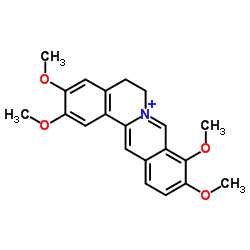
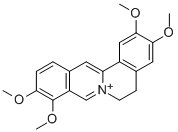
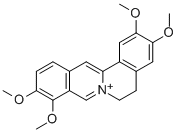
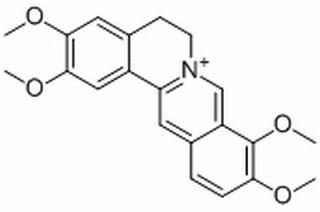
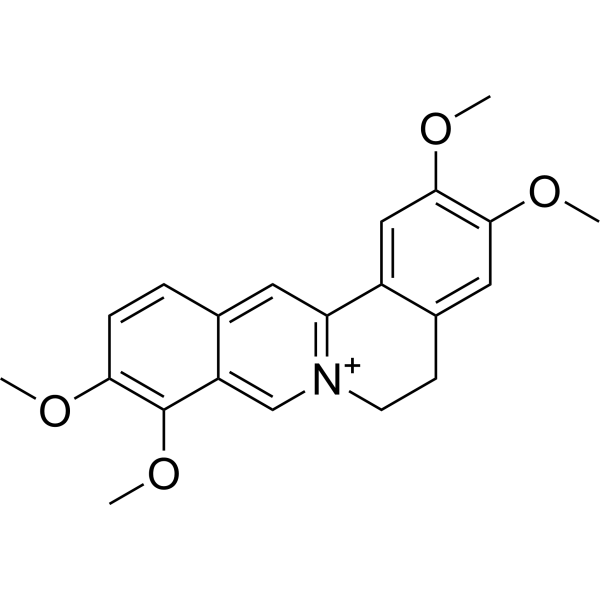


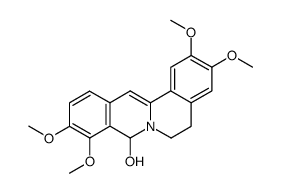
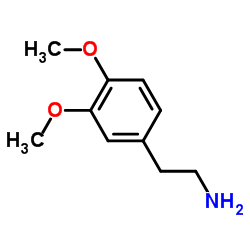
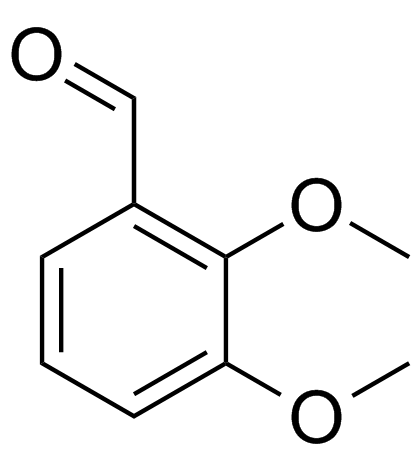
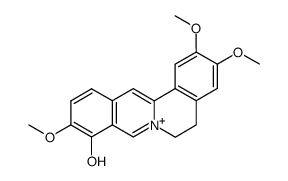

 浙公网安备 33010802013016号
浙公网安备 33010802013016号